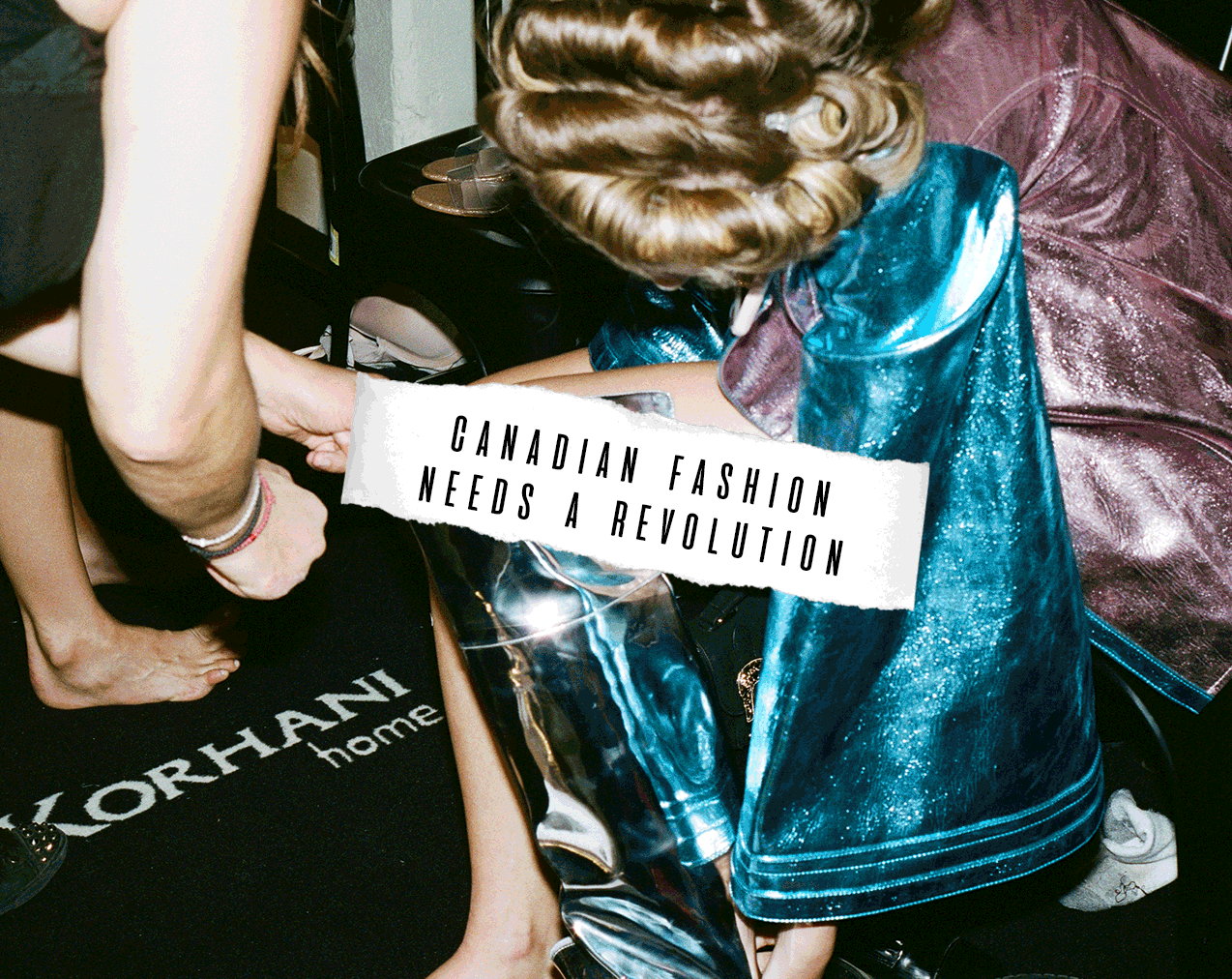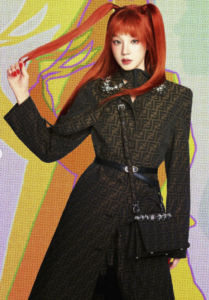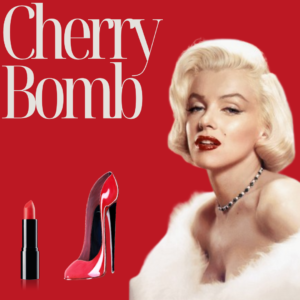This September, we observed fashion shows at TOM*, TWFW and Toronto Fashion Week, all of which left us feeling underwhelmed and hungry for more. Amidst the collections, clothes were wearable, likeable, but just that. The majority of designers presented collections that were safe which isn’t exactly an enticing choice of vocabulary when trying to vie for attention amidst much more established and cohesive international fashion weeks. It also isn’t the vocabulary you want used when trying to illuminate fashion as an art form. Compared to the highly regarded fashion weeks around the world, the work being showcased at TFW would not have been tolerated, in terms of quality and creativity. It’s not to say that Canada produces mediocre designers – great names hailing from Canada like Sid Neigum, Beaufille, Erdem, and Tanya Taylor prove a case for success. But rather, that all the real talent born in Canada goes elsewhere to nurture and launch their careers.
So the question to ask is: why?
Why do Canada’s best and brightest all choose to leave our home and native land? Why is Toronto’s “central” fashion platform, now held in the heart of Yorkville, not enough for blossoming designers to create and present garments that appeal to the public while also inspiring as works of art? Perhaps it’s time to look at what the term “Toronto Fashion Week” means and dissect where the problems lie.
Identity Crisis
One of TFW’s fatal flaws is its lack of identity. New York Fashion Week is home to street style, Paris Fashion Week is the hub of haute couture, while Toronto Fashion Week lacks its defining niche. It’s critical to distinguish the brand’s identity and narrative tying the event together in order to gain relevance and intrigue amongst the market. The storytelling at TFW, as well as a more memorable experience for the audience, can be found in the fine details that contribute to the show in its entirety. Consideration to the venue, decor, attendees, and production altogether, rather than merely the clothes on the model, is crucial to their success. As the German’s say, it should be a Gesamtkunstwerk; “a total work of art”.
This past season, there was no Gesamtkunstwerk to be found in “Toronto’s luxury shopping district” as runway collections were presented on a dark, cramped runway, inside a plastic tent. Said tent was placed in the middle of a street, normally used by cars and pedestrians, forcing those in the area to divert their traditional path. The tent was drafty and see-through, and filled with VIP guests who seemed more concerned with the cash bar than they were about the clothes walking down the runway. Not that they could actually see the clothes, it was so darkly lit. Runway presentations followed a similar format as always; models walking in straight lines and plain backdrops with the brand’s name projected on an oversized TV. One exception was Pink Tartan, a hallmark Canadian brand who’s TFW presentation felt more like an expanded retail showroom than a fashion presentation. Clothes were displayed in very dark lighting, and were worn by posed mannequins, not human models. The set design budget for TFW evidently got nixed in order to pay for Russel Peter’s airfare.
Wrong People, Wrong Time
Equally important in a fashion week’s success is the guest list. Once upon a time, fashion weeks around the globe were exclusive to the Anna Wintour’s and Grace Coddington’s of the fashion world. Now more than ever, the attendance of socialites and media stars is crucial for the exposure of the designer’s work, but doing so strategically can make or break the image of these biannual events. Exclusivity is only effective when those attending have a valuable opinion. Influencers and bloggers are beneficial for publicity but selectiveness is key so that the artistic intent of fashion doesn’t become diluted in superficiality. Toronto Fashion Week, TOM* and TW all fell victim to this as the front rows of most runway shows were filled with bloggers entranced by their phones or too busy takin selfies. The industry professionals who were there to their jobs often couldn’t see past the outstretched arms trying to get the right angle. Certain editors of major fashion publications in the city didn’t even attend the TOM* and TW shows – so what does that tell you?
The Bigger Picture
In the big picture, Toronto’s fashion scene is on the verge of becoming too cosmetic. We’re losing the soul behind what fashion really is. Despite what the bloggers say, fashion is not a picture of your outfit of the day, displayed on Instagram while you have brunch at the Drake Hotel. Fashion is supposed to be the result of an artist at work. It questions society, unpacks tough issues and presents it in a language we can all understand. Fashion is ultimately about the human condition and is a display of what happens when art and commodity intersect. What should be showcased on the runway is the designer’s interpretation of all these things. If they can’t present that in an attractive way, how will the audience be interested enough to lift their noses up from their smartphone screens?
Blame Game
So who is to blame – the disconnected audience too consumed with their follower count or the lackluster designers who aren’t forcing them to look up? On the one hand, we need audience members who genuinely and purely care about the art of fashion, who can make an educated critique of a designer so they can become better. On the other hand, we can’t just tell designers, “be better” and expect them to transform overnight into the next Céline or Opening Ceremony. We need to ask questions like “what will make you better?”, “what do you offer your consumer?”, “what story do you want to tell?”, and “is it worth telling?”
At the end of the day, the Toronto (and Canadian) fashion industry needs to assess who we want to be on the international stage and what we want to show the world. Designers need to come to play on an international level, and if they ask themselves “would this fly at New York Fashion Week” and the answer is “no”, then maybe they should try another industry. If we want to say “Toronto is Canada’s New York” (which we all do already) our design talent needs to prove that they are capable of performing at that calibre.
Moving Forward
Finally, to counter the relatively underwhelming, lacklustre shows displayed this season, we feel designers should be given more guidance, and have access to the tools that will help them achieve their goals. Things like business management support, financial backing, strategic campaigning, and a stronger online presence. They should have access to resources like education systems that prepare them for the gruelling nature of the industry, organizations that provide funding opportunities and grants, and tax benefits for employing local and producing. In addition, our brands need access to domestic production that doesn’t break the bank, and presentation platforms such as RE/SET 002 (a presentation that showed what a Canadian fashion week could be), that is centred on the brand’s specific goals instead of on throwing a rich people party. This collective support from all angles of the industry will inspire young designers to embrace their fresh perspectives and take risks with their creations.
With all of this in mind, we see the Toronto fashion scene as poised for a revolution, with the potential to become a place of authenticity, novelty and identity. The question is: are we all ready to do what it takes to get there?
Feature graphic by Nicole Tinker.
























